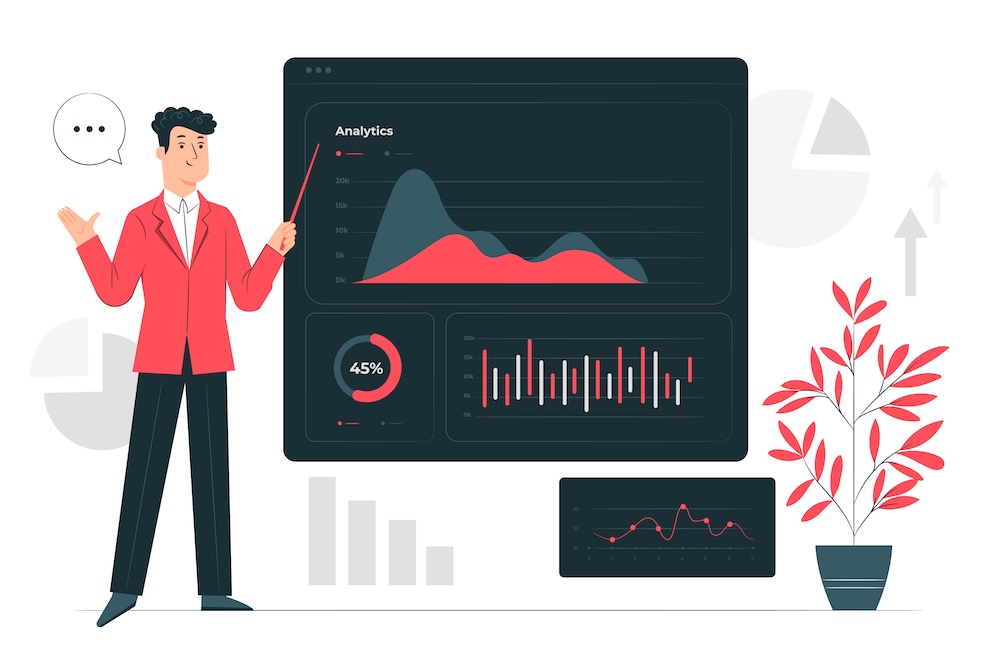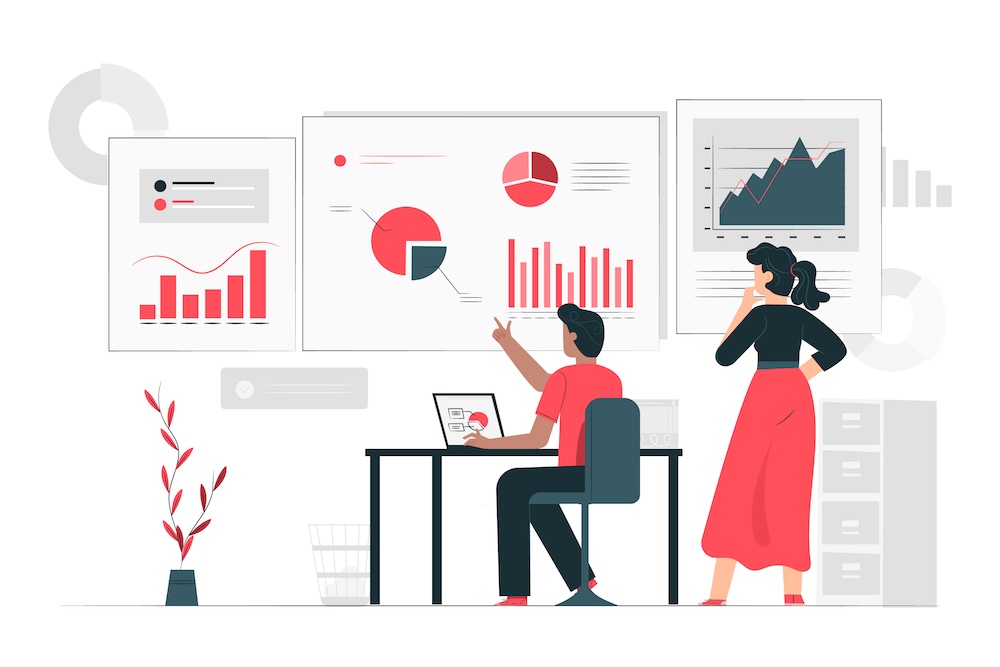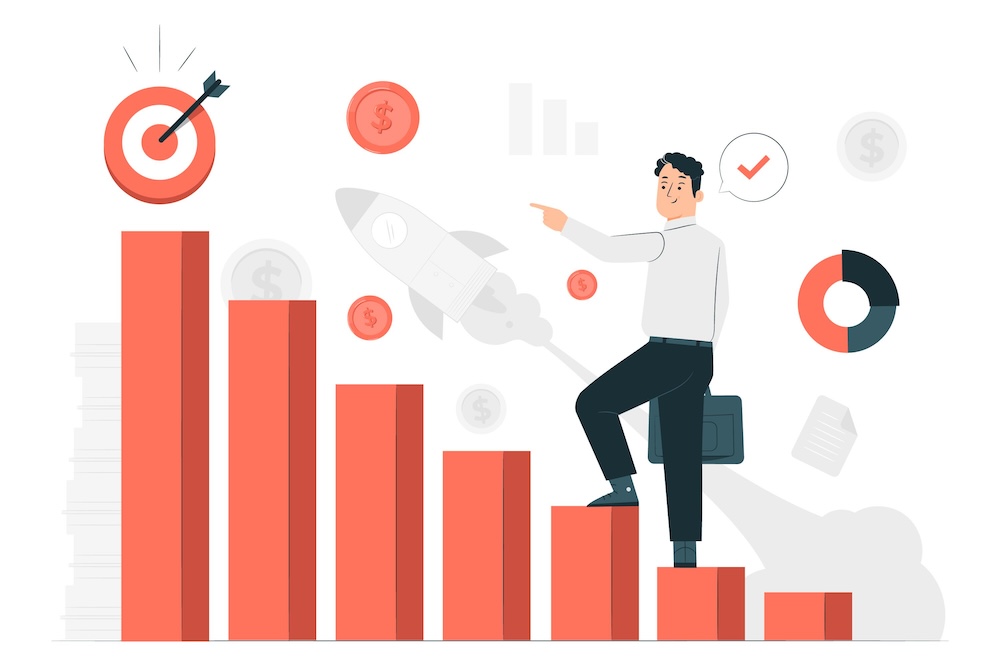
Sales teams in the modern business environment are under constant pressure to meet and exceed their targets. The stakes have never been higher, either, with more and more companies fighting for market share every single day.
But with the recent explosion in advanced technologies, artificial intelligence and predictive analysis have emerged as powerful tools that can help forward-thinking salespeople to anticipate performances, identify trends, and ultimately drive sales growth.
In the following article, we’ll be taking a deep dive into how these technologies work, what they’re doing to transform the sales landscape, and how their applications, benefits, and future potential can be leveraged to grow bottom-line revenue across the board.
Understanding AI and Predictive Analysis
Artificial intelligence has been the buzzword on everybody’s tongue for the last several years. With ChatGPT’s general release, the range of potential applications has exploded. These days, everyone’s got something to say about AI, and businesses that aren’t using automation in their processes are finding themselves falling behind their competitors at an unprecedented rate.
AI itself is a catchall term that encompasses machine learning, natural language processing, and neural networks, to mention just a few verticals. For the purposes of today’s article, we’ll be focusing on its intersection with predictive analysis, a powerful concept in the world of data engineering with major real-world applications for the sales industry.
Predictive Analysis involves using statistical techniques and machine learning algorithms to analyze historical data and make predictions about future outcomes. In the context of sales, predictive analysis can forecast sales trends, customer behavior, and market dynamics, helping modern teams to make better, more concrete data-driven decisions about their systems and processes.
The Role of AI and Predictive Analysis in Sales
AI and predictive analysis are reshaping how sales teams operate by providing actionable insights, automating routine tasks, and streamlining the entire process from one end of the pipeline to the other.
Providing a comprehensive overview of the impact would be the work of an entire book, so for the purpose of this guide, let’s take a bird’s-eye-view perspective of how these technologies are making a difference:

1. Sales Forecasting
Accurate sales forecasting is a crucial component in successful business planning and resource allocation. Forecasting itself is nothing new—for as long as people have been selling, they’ve been trying to learn from their mistakes and predict trends in order to maximize efficiency.
However, traditional forecasting methods often rely on historical sales data and manual adjustments, which can be time-consuming and prone to errors. AI-driven predictive analysis enhances forecasting accuracy by:
Analyzing Large Data Sets
AI algorithms can process enormous amounts of data from various sources, including CRM systems, market trends, and economic indicators, in order to provide more accurate forecasts than was ever possible before.
Identifying Patterns
Machine learning models can identify patterns and correlations at a much deeper and broader scale than humans could ever be capable of, leading to significantly more useful predictions of sales performance that teams can then use to enhance their processes.
Real-Time Updates
The latest advancements in AI have made it possible for the technology to continuously analyze new data and update forecasts in real-time, allowing managers to adjust their sales strategies in response to every new piece of information they take in.
2. Customer Insights and Segmentation
As every salesperson knows, understanding customer behavior is the key to creating and implementing successful sales strategies. There are a number of different ways AI and predictive analysis give sales teams deeper insights into their customer segments and personas:
Predicting Customer Needs
By analyzing past purchase behavior, browsing history, and interaction patterns through mediums like social media platforms, AI can predict what customers are likely to need or want next, often before the customers themselves are even aware of it.
Segmenting Customers
Predictive analysis can identify distinct customer segments based on behavior, preferences, and demographics. Although this process isn’t anything new, the scale and speed at which it’s now possible has created a paradigm shift in the industry. Today, more than ever, personalized marketing and sales approaches are the difference-makers in terms of sales growth, and efficient customer segmentation lies at the heart of that process.
Churn Prediction
Here’s a fun one. AI models can identify customers who are at a dangerously high risk of churn, allowing sales teams to take proactive measures to retain them.
3. Lead Scoring and Prioritization
Not all leads are created equal, and prioritizing high-potential leads is one of the best ways to significantly improve sales efficiency. So how does AI help sales teams improve their lead scoring and prioritization efforts?
Evaluating Lead Quality
AI algorithms can assess lead quality based on various factors, such as engagement level, demographics, and past interactions.
Predicting Conversion Likelihood
Predictive models can forecast the likelihood of a lead converting into a customer, helping sales teams focus on the most promising opportunities and use their most precious resource, time, as efficiently as possible.
Automating Lead Assignment
AI can automatically assign leads to the most suitable sales representatives, taking into account factors like expertise, past performance, and current workload.
4. Sales Process Optimization
This won’t come as a surprise to any salesperson who’s been in the game for a while, but optimizing the sales process is essential for maximizing efficiency and effectiveness. Today, AI and predictive analysis can be leveraged to radically improve your optimization efforts. Here’s how.
Identifying Bottlenecks
AI can analyze the sales pipeline to identify stages where deals are getting stuck or lost, making it possible to work towards laser-targeted improvements with significant payoff potential.
Recommending Best Practices
Predictive models can suggest best practices based on successful sales strategies and tactics used in similar situations, drawing on mountains of data to focus on the ideal techniques going forward.
Automating Routine Tasks
AI can automate repetitive tasks such as data entry, follow-up emails, and scheduling, freeing up sales representatives to focus on high-value activities. The knock-on effect here is huge—not only are reps less occupied, but morale is higher too, meaning the energy they do devote towards other tasks will end up being much more well-spent.
5. Personalized Customer Engagement
One worry a lot of people have about AI is that it’s going to take away the human touch that is so crucial in successfully dealing with customers. But that’s not the case. Although personalization is a key driver of customer satisfaction and loyalty, AI and predictive analysis can actually make it more effective.
Tailoring Communications
AI can analyze vast amounts of customer data in order to personalize email content, product recommendations, and marketing messages.
Timing Interactions
Predictive models are capable of determining the best times to engage with customers based on their behavior and preferences, increasing the chances that your outreach messages will be read and engaged with.
Customizing Offers
Thanks to its ability to draw insights from past performance data, AI can even suggest options for personalized offers and discounts that are most likely to resonate with individual customers.
Benefits of AI and Predictive Analysis for Sales Teams

There are a huge number of benefits to any organization from integrating AI and predictive analysis into your sales processes. Let’s take a look at some of the most compelling, real-world improvements.
1. Increased Sales Efficiency
By automating routine tasks and providing actionable insights, AI enables sales teams to work more efficiently than ever before. Freed from the shackles of busywork and repetitive manual tasks, representatives can focus on high-priority leads and strategic activities, leading to higher productivity, better outcomes, and a more fulfilling professional experience for everybody involved.
2. Improved Sales Performance
Accurate sales forecasting, effective lead scoring, and personalized engagement are all major contributors to sales performance. With AI in their corner, sales teams can achieve higher conversion rates, increase their average deal sizes, and retain more customers with less effort required.
3. Enhanced Decision-Making
AI-driven insights empower sales managers to make data-driven decisions. And when you combine it with predictive analysis—which provides a clearer understanding of market trends, customer behavior, and sales performance—you’ll find your strategic planning is more concrete and fruitful than it ever was before.
4. Better Customer Relationships
With the help of high-level personalization improvements, engagement and proactive customer retention efforts create stronger customer relationships across all your segments. AI offers sales teams an increased understanding of customer needs and preferences, leading to higher satisfaction and loyalty down the line.
Implementing AI and Predictive Analysis in Sales
So far, so great, right? AI and predictive analysis has the potential to revolutionize any sales teams’ processes. But you might be wondering how, exactly, you’re supposed to go from understanding this concept to actually making it a reality.
Luckily, we’re here to help. Here are the two major factors you should consider in order to successfully implement AI and predictive analysis in your organization:
1. Data Collection and Management
The foundation of predictive analysis is high-quality data. In order to ensure they’re working with the best possible information, businesses should:
Integrate Data Sources
Consolidate data from various sources such as CRM systems, social media, customer support, and market research.
Ensure Data Quality
Implement processes to clean, standardize, and validate data to ensure accuracy and reliability.
2. Selecting the Right Tools
Choosing the appropriate AI and predictive analysis tools is critical. There’s a huge range of potential choices out there. Recommending specific tools is beyond the scope of this article, not least because the right choice for your business is going to depend on a number of different factors unique to your operations. But here are a couple of broad ideas to keep in mind as you set about narrowing the pool.
Evaluate Vendor Solutions
Assess different AI platforms and predictive analysis tools based on features, scalability, and ease of integration. Remember to keep budget at the forefront of your mind—there’s no point choosing a solution you don’t actually have the resources to implement effectively.
Consider Custom Solutions
If you’re a bigger company, it might be worth considering developing custom AI models tailored to specific requirements. It’ll demand a higher investment, but the growth potential down the line that comes from working with a model designed for your specific needs more than merits the initial outlay.
The sales landscape of today is a rapidly changing, ever-shifting beast—but with AI and predictive analysis on your side, you stand a great chance of getting ahead of your competitors and staying on top of your industry. Effectively leveraging these technologies means higher efficiency, improved performance, and better customer relationships. Your sales reps will thank you for reducing their manual workload, your higher-ups will be delighted when they see the boost in growth—what’s not to love?
FAQ
AI improves sales forecasting accuracy by analyzing large datasets from various sources like CRM systems, market trends, and economic indicators. It identifies patterns and correlations that human analysis might miss and continuously updates forecasts in real-time based on new data, allowing sales teams to make more informed and timely decisions.
Predictive analysis offers several benefits in sales, including enhanced decision-making through data-driven insights, improved sales efficiency by prioritizing high-potential leads, and the ability to forecast customer behavior and market trends. These advantages lead to higher conversion rates, better customer retention, and optimized sales strategies.
AI can personalize customer engagement by analyzing vast amounts of customer data to tailor communications, product recommendations, and marketing messages. It also determines the optimal timing for interactions and customizes offers based on individual customer preferences, leading to higher customer satisfaction and loyalty.


